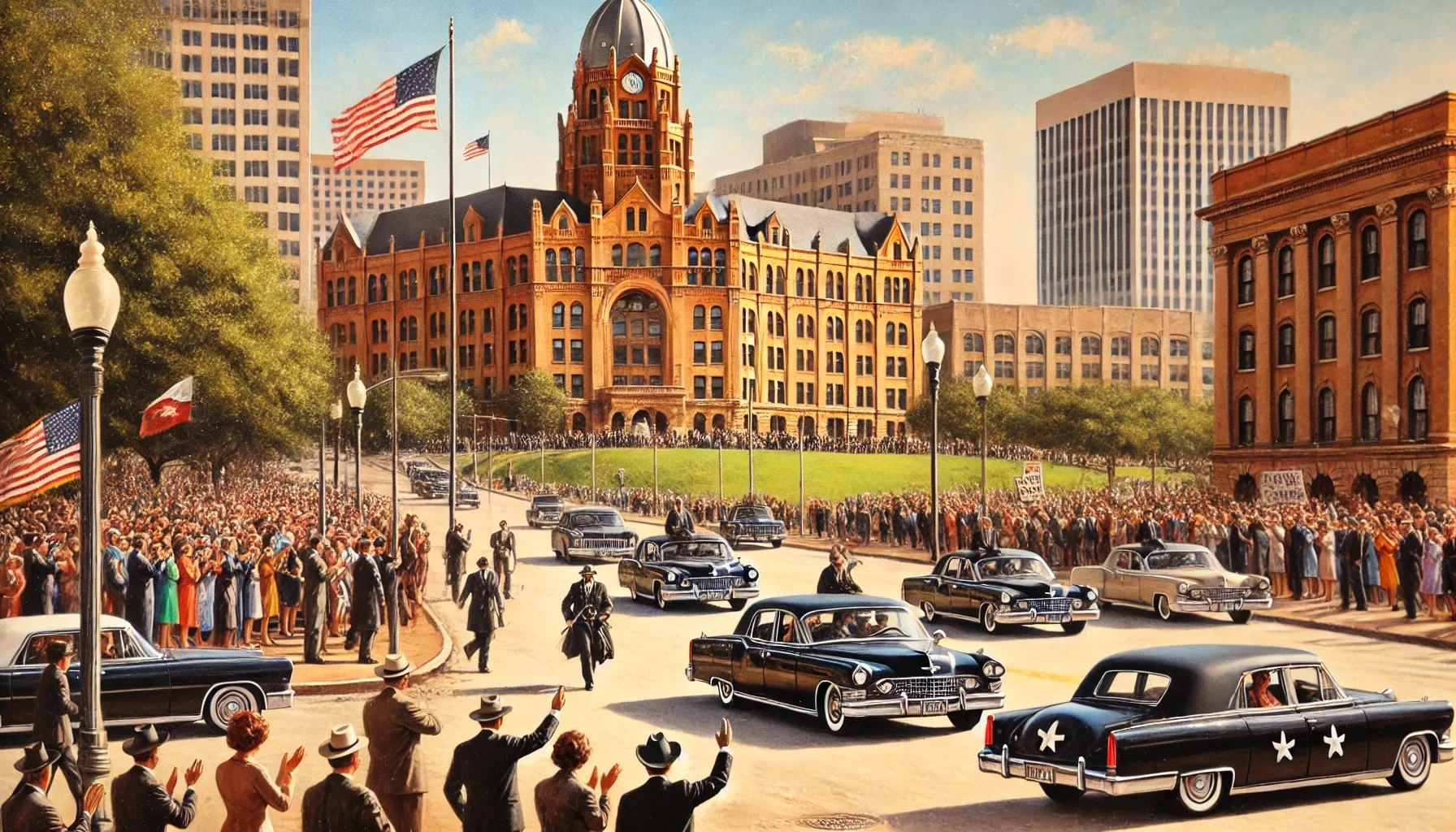
The Assassination of John F. Kennedy
by: The Calamity Calendar Team
November 22, 1963
The Lead-Up: A Trip to Mend Political Fences
John F. Kennedy embarked on a political tour through Texas, aiming to unite a fractured Democratic Party and solidify support for his upcoming re-election campaign. The tour included stops in San Antonio, Houston, and Fort Worth, culminating in Dallas. Kennedy’s visit was intended to showcase party unity and address the internal frictions between the liberal and conservative wings of the Texas Democrats. Accompanied by his wife Jacqueline, Vice President Lyndon B. Johnson, and Texas Governor John Connally, Kennedy’s presence in Texas was highly anticipated.
A Day Like No Other: The Timeline of Tragedy
12:00 PM: President Kennedy’s motorcade departed from Love Field in Dallas, greeted by cheering crowds. The atmosphere was electric with anticipation and hope.
12:29 PM: As the motorcade entered Dealey Plaza, the mood remained festive, with thousands of onlookers lining the streets to catch a glimpse of the charismatic leader.
12:30 PM: The joy turned to horror as gunfire erupted. From a perch on the sixth floor of the Texas School Book Depository, shots were fired. President Kennedy was struck twice, once in the upper back and fatally in the head. Texas Governor John Connally, riding in the same vehicle, was also injured.
Thanks for subscribing!
12:32 PM: The motorcade, now a scene of chaos and desperation, sped towards Parkland Memorial Hospital in a frantic attempt to save the President’s life.
1:00 PM: Despite the best efforts of medical staff, John F. Kennedy was pronounced dead at Parkland Memorial Hospital. The news shattered the nation, plunging it into mourning and confusion.
1:38 PM: Aboard Air Force One, Lyndon B. Johnson was sworn in as the 36th President of the United States, ensuring the continuity of government amidst the crisis.
2:15 PM: Lee Harvey Oswald, an employee at the Texas School Book Depository, was arrested for the murder of Dallas police officer J.D. Tippit, killed shortly after the assassination.
7:10 PM: Oswald was formally charged with the murder of President Kennedy, marking the beginning of a complex and controversial investigation.
The Aftermath: A Nation in Mourning
The assassination left a nation grieving and a world stunned. The immediate property damage was minimal, confined to the presidential limousine, but the emotional and psychological impact was immeasurable. Texas Governor John Connally survived his injuries, but the nation had lost its young and vibrant leader.
The killing of Dallas police officer J.D. Tippit by Oswald added to the chaos and sorrow of the day. The aftermath saw a massive federal investigation, led by the Warren Commission, which concluded that Oswald acted alone. This finding has been the subject of much debate and numerous conspiracy theories over the years.
Response and Recovery
The government’s response was swift and comprehensive. The Secret Service immediately reviewed and revised its protocols, implementing stricter security measures to protect future presidents. The assassination spurred legislative changes aimed at improving the security of public officials, ensuring such a tragedy would not easily recur.
The Warren Commission’s report, while controversial, laid the groundwork for understanding the events of that day. Despite its conclusion that Oswald acted alone, subsequent investigations, including the House Select Committee on Assassinations (HSCA) in the 1970s, suggested the possibility of a conspiracy, though definitive proof remained elusive.
Enduring Mysteries and Ongoing Debate
The assassination of John F. Kennedy continues to be a topic of intense discussion and speculation. Various conspiracy theories have emerged, fueled by inconsistencies and unanswered questions. Recently declassified documents have only added to the intrigue, though no new evidence has fundamentally changed the established narrative.
Conclusion
The assassination of John F. Kennedy was more than a tragic event; it was a pivotal moment in American history. It exposed vulnerabilities, led to significant changes in security protocols, and left an indelible mark on the national consciousness. As the debate over the details and implications of that day continues, the memory of JFK’s vision and leadership endures, reminding us of the fragile nature of political life and the profound impact of a single moment in time.
Stay in the Loop!
Become a Calamity Insider and get exclusive Calamity Calendar updates delivered straight to your inbox.
Thanks! You're now subscribed.